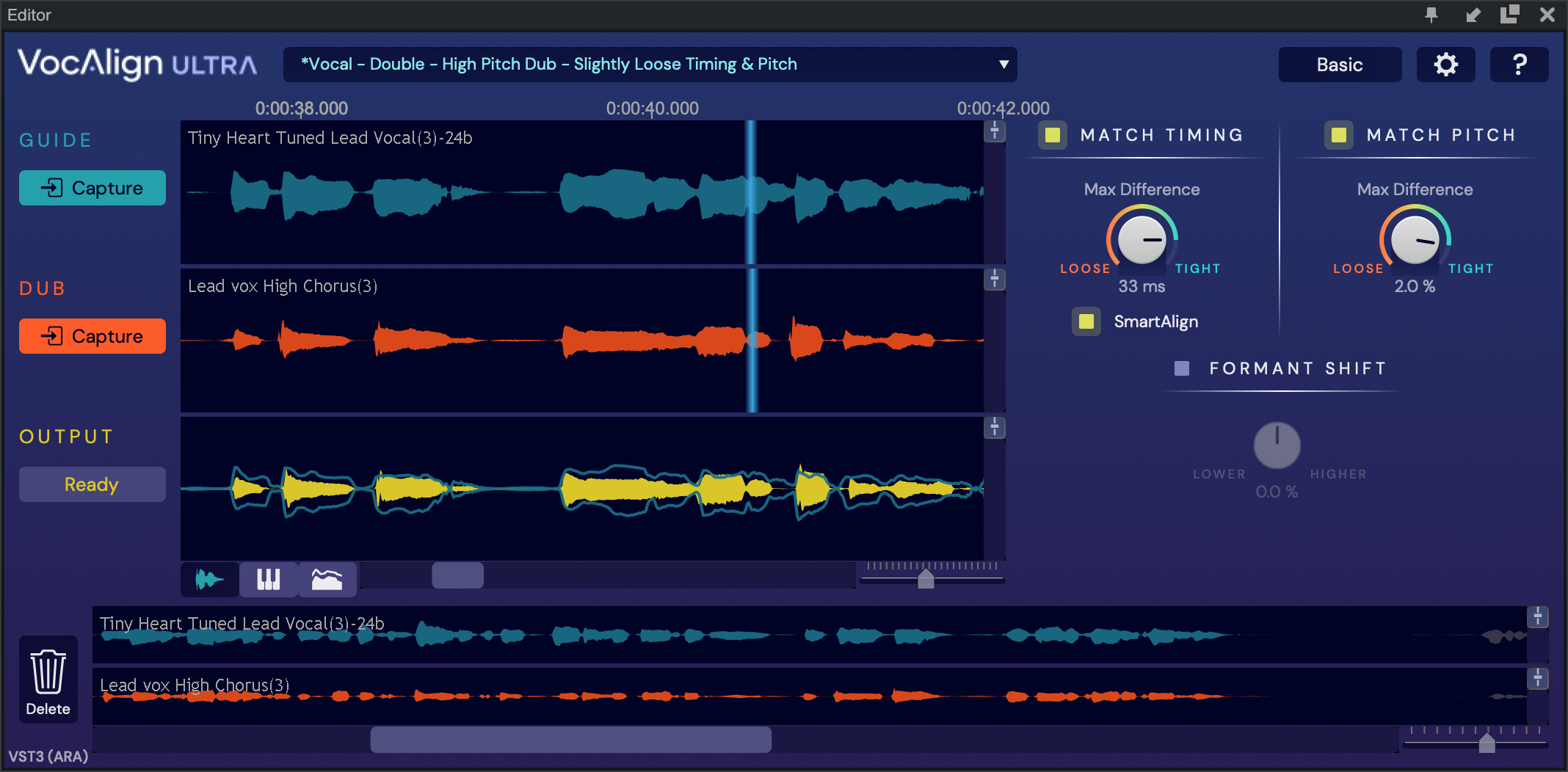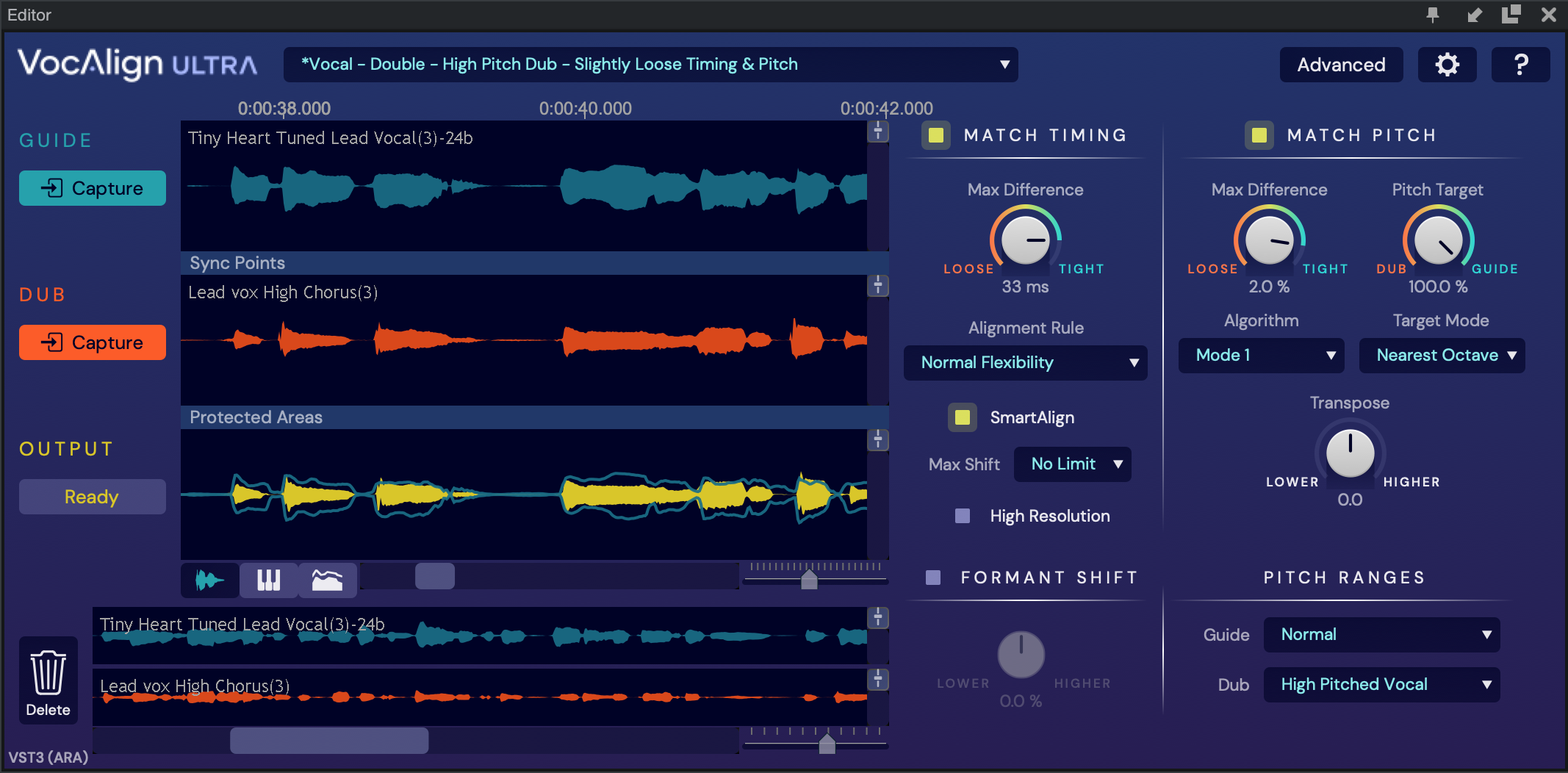Operational Overview
VocAlign Ultra - Operation Overview
In this section, we describe what the interface(s) looks like and the general flow of operations you will use.
There are 3 different interfaces you might see, depending on what DAW you use and which plug-in type you are using. This will be explained in more detail later.
[Updated video 'Learn VocAlign Ultra in 7 minutes' for VocAlign 1.1 with SmartAlign workflow forthcoming]
Start with a Preset
A task-orientated library of presets covers a broad array of common usage scenarios, and often, you won’t need to do anything more than Select a preset, to get the job done. However, you can always adjust the Match Timing and Match Pitch "tightness" controls to get a tighter or looser sounding result.
The screen below shows a VocAlign Ultra’s screen with Basic controls showing on the right side.

Switching to Advanced mode, however, reveals several further controls governing the nuances of the algorithms at work in the audio editing processor, as well as a linear pitch transposition control for creative pitch-shifting.

In addition, the Formant Shift control facilitates dramatic tonal shaping and vocal ‘gender’ changes.
Important! Your DAW is a variable
VocAlign Ultra requires the Guide and Dub audio to be captured (imported), and the Processed audio to be exported back to the host DAW.
However, the process of getting audio into and out of the plugin varies widely between different DAWs since they have one or more standards for doing this, which includes AAX (AudioSuite), VST3, AU, and ARA 2 for VST3 and AU. See Versions and DAWs
Because of this, we provide Quick Start sections for the most popular DAWs which describe one or two methods of getting your audio into and out of VocAlign Ultra for each plug-in standard used by these main DAWs. We will also explain when these steps (or very similar) wllll sometime apply to other DAWs.
In the next sections of this Guide, we describe the operations that are universally applicable to all DAWs that can support VocAlign Ultra.